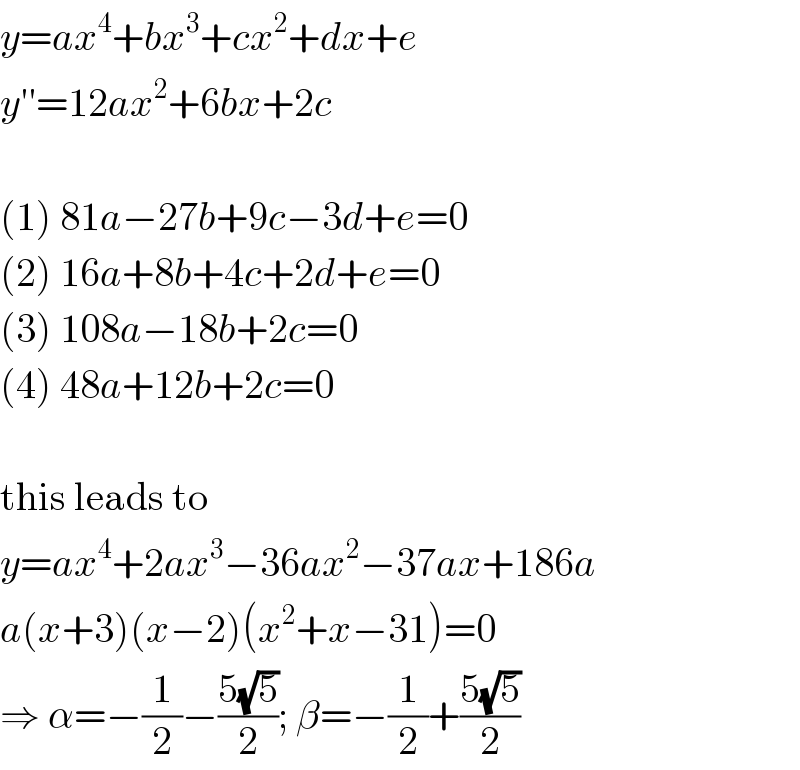
Question and Answers Forum
Question Number 47019 by ajfour last updated on 04/Nov/18

Commented by ajfour last updated on 04/Nov/18

Commented by ajfour last updated on 04/Nov/18

Answered by MJS last updated on 04/Nov/18

Commented by MJS last updated on 04/Nov/18
![(x+3)(x−2)(x+(1/2)+((5(√3))/2))(x+(1/2)−((5(√3))/2))= =x^4 +2x^3 −((47)/2)x^2 −((49)/2)x+111 (d^2 /dx^2 )[x^4 +2x^3 −((47)/2)x^2 −((49)/2)x+111]=12x^2 +12x−47 x=−3 ⇒ 12x^2 +12x−47=25 x=2 ⇒ 12x^2 +12x−47=25 so something went wrong](Q47051.png)
Commented by ajfour last updated on 04/Nov/18

Commented by MJS last updated on 04/Nov/18

Commented by peter frank last updated on 04/Nov/18

Answered by ajfour last updated on 04/Nov/18
![y=a(x^2 +x−6)(x^2 +px+q) y ′=a(2x+1)(x^2 +px+q) +a(x^2 +x−6)(2x+p) y ′′=a[2(x^2 +px+q)+(2x+1)(2x+p) +(2x+1)(2x+p)+2(x^2 +x−6)] ⇒ y′′=2a[x^2 +px+q +(2x+1)(2x+p) +x^2 +x−6] ⇒ y′′=a[6x^2 +3(p+1)x+(q+p−6)] as its roots are x=−3, 2 ⇒ −(((p+1))/2) = −1 ⇒ p =1 and q+p−6 = −36 ⇒ q = −31 hence roots of x^2 +px+q =0 ⇒ x^2 +x−31=0 that is α, β are = ((−1±(√(1+124)))/2) = ((−1±5(√5))/2) .](Q47052.png)
